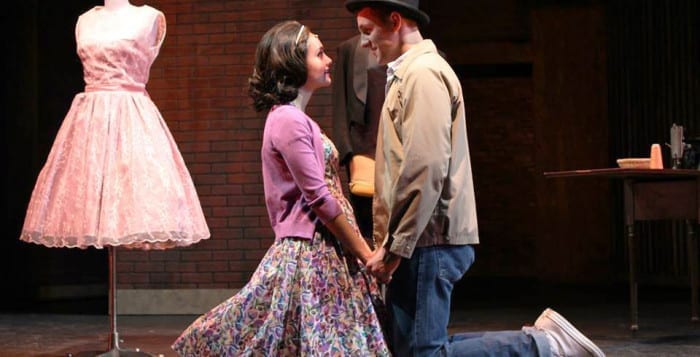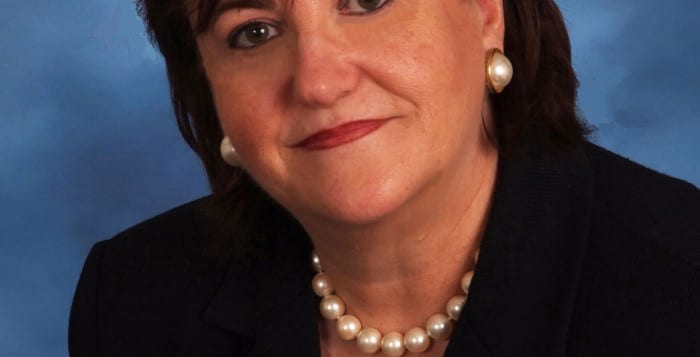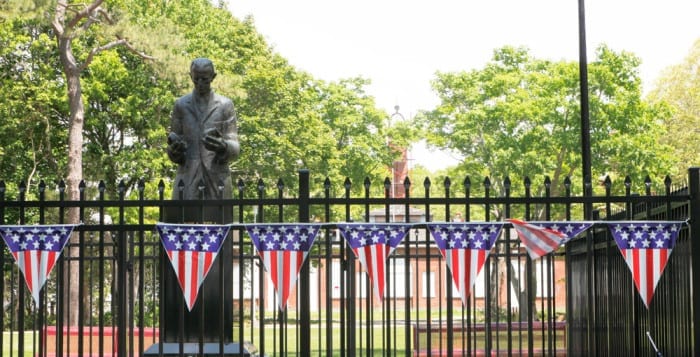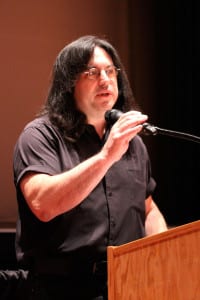Car parts thief sought
Suffolk County Police are seeking the public’s help in identifying and locating a man who stole catalytic converters from vehicles in Hauppauge earlier this month.
Police said the man stole 10 catalytic converters from commercial vehicles parked at three businesses on Oser Avenue in the early morning hours of July 3.
Suffolk County Crime Stoppers offers a cash reward of up to $5,000 for information that leads to an arrest. Anyone with information about this crime is asked to call anonymously to Crime Stoppers at 1-800-220-TIPS. All calls will be kept confidential.
High interrupted
A 26-year-old man from East Northport was arrested in Smithtown on July 12 and charged with driving while ability impaired by a combination of drugs and alcohol. Police said the man was driving a 1995 Honda and crashed into a tree on Route 25A and Oakside Road in Smithtown. He was arrested at 2:19 a.m. Police did not know which drug the man was on.
Rowdy gun-wielders arrested
Two individuals were arrested on July 8 in Smithtown and charged with second-degree criminal possession of a weapon. Police said a 20-year-old man from Central Islip and a 20-year-old woman from Brooklyn possessed loaded handguns, and both were arrested on Nesconset Highway at 8 p.m. The man was also charged with obstruction of government administration — for flailing his legs and refusing to be placed in a police car — and two counts of menacing in the second degree, for displaying a handgun to two separate women shortly before his arrest. The woman was charged with disorderly conduct — police said she threatened others in a parking lot.
What a pill
Suffolk County Police arrested a 29-year-old man from Kings Park on July 12 at about 9 p.m. and charged him with criminal possession of a controlled substance. Police said he was arrested on 4th Avenue in Kings Park, where he was found in possession of prescription pills.
Check yourself
Police said someone stole a checkbook from a man’s 2010 Lexus LX450 parked on West Main Street in Smithtown on July 12 at about 7 a.m. There have been no arrests.
Cash out
Someone removed a register box containing cash from LA Fitness on East Main Street in Smithtown sometime between 10 p.m. on July 11 and 8 a.m. on July 12. There have been no arrests.
Wheel of misfortune
Someone took four wheels and tires from a 2014 Toyota Tundra at Smithtown Toyota on East Jericho Turnpike in Saint James between 6 p.m. on July 11 and 11 a.m. on July 12. There have been no arrests.
Coming down from a high
Suffolk County Police arrested a 24-year-old man from Setauket and a 22-year-old female from Stony Brook on July 10 in Stony Brook and charged them with loitering and unlawful use of a controlled substance. Police said the pair were observed at a location on North Country Road in Stony Brook in a Ford Taurus in possession of heroin. The duo was arrested at 8:37 a.m., police said.
Car looted
Police said an unknown person took money and a gift card from a 2015 Ford parked on Blinker Light Road in Stony Brook. The incident was reported on July 10 at 6:30 p.m.
Road bump
Someone stole a bicycle from outside a garage on Braemer Road in Setauket. The incident happened sometime between 10 p.m. on July 11 and 9 a.m. on July 12.
Jewelry jam
Police said someone stole jewelry from Kohl’s on Nesconset Highway in Setauket on July 11 at 6:45 p.m. There have been no arrests.
Purse pickpocketed
Police said a woman reported that someone stole her license and credit card from her purse as she was shopping at Walmart on Nesconset Highway in Setauket. The incident occurred on July 9 at 2 p.m., police said.
Money mystery
Police said an Antler Lane resident from South Setauket reported that someone used his Chase banking card to make several cash withdrawals between July 1 and July 9. There are no arrests.
Bank withdrawal woes
Police said that a Stalker Lane resident from Setauket reported someone used his bank information to make three unauthorized withdrawals between July 8 and July 9. There are no arrests.
Car trouble
Things got a little crazy on Woodhull Avenue in Port Jefferson Station on July 4, at around 10:05 p.m., when someone threw items at a 2013 Hyundai and damaged a car door.
Midnight mischief
An unknown person slashed the driver side tire of a 2007 Hyundai parked on Route 112 in Port Jefferson Station on July 3.
Ride denied
A woman reported being harassed by a cab driver on June 30 at around 3 p.m. According to police, the complainant said she called a cab service to pick her up from a dollar store in Port Jefferson Station, but the driver refused to take her. He then allegedly pushed her and took her grocery bags out of the cab and drove away.
Bad luck
A 2008 Toyota’s side view mirror was damaged on July 7 while parked on Dayton Avenue in Port Jefferson Station.
Cloned
Police received two reports of cloned credit cards in the Port Jefferson Station community on July 7. According to police, a resident on Magnolia Drive reported an unknown person had cloned their ATM card and made withdrawals using their pin. Another resident on Pine Street made a similar report.
Razor-sharp
The person who demanded money at the USA Gasoline on Route 112 in Port Jefferson Station got quite the surprise on July 6. According to police, the suspect went into the station shortly after 9:30 p.m. with a razor blade and demanded cash, but the quick-thinking complainant grabbed a knife and chased the intruder out of the store.
Taking flight
A 20-year-old Mount Sinai resident was arrested and charged with seventh-degree criminal possession of a controlled substance, third-degree fleeing from an officer in a motor vehicle and third-degree aggravated unlicensed operation of a motor vehicle on July 9. Police said the woman was driving a 1999 Chevy north on Route 112 in Terryville at around 3 p.m. when police attempted to pull her over. As the officer approached her vehicle, the woman pulled away, almost striking two vehicles, and exceeded the speed limit on Route 112 before pulling over again. Police discovered Roxicodone, a prescription opioid, in her possession.
I saw the sign
A homeowner’s 10 “no parking” and “no trespassing” signs on North Country Road in Miller Place were spray-painted or torn down on July 10.
Lock ‘em up
A wallet full of credit cards and cash was reported stolen on July 8 from an unlocked 2007 Chevy parked at a residence on Ann Street in Miller Place.
Thumb war
A 56-year-old Miller Place man was charged with second-degree assault and second-degree menacing after he stabbed a man in the finger. The incident took place on July 8 at the suspect’s Avery Lane home.
Dashed board
On July 8 at 9 p.m., a Washington Avenue, Centereach, resident reported the dashboard of their 2010 Nissan was damaged.
Grocery games
A woman reported on July 7 that her wallet, with $2,000 in cash, was stolen from her shopping cart at the Centereach Mall Walmart.
Screened
A home on Rosemary Lane in Centereach had a window screen damaged on July 12.
Picking up
An unlocked 2008 Ford pickup truck parked at a Bank Street residence in Selden was robbed of a tablet and money on July 7.














